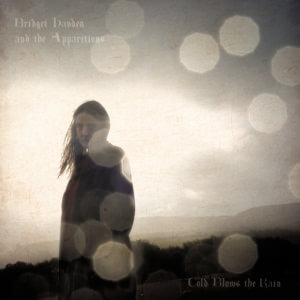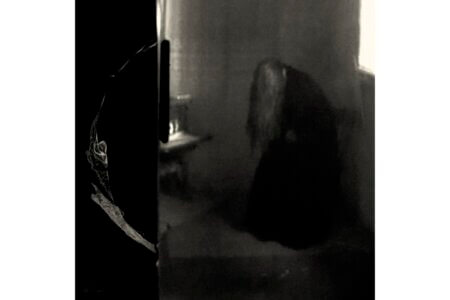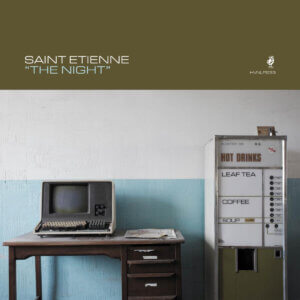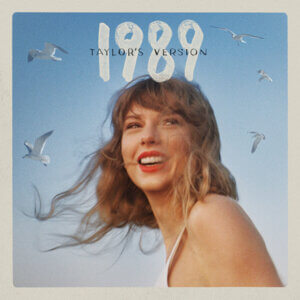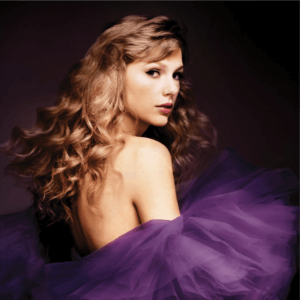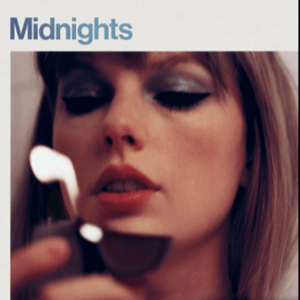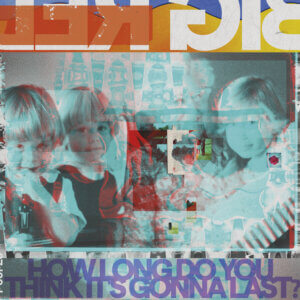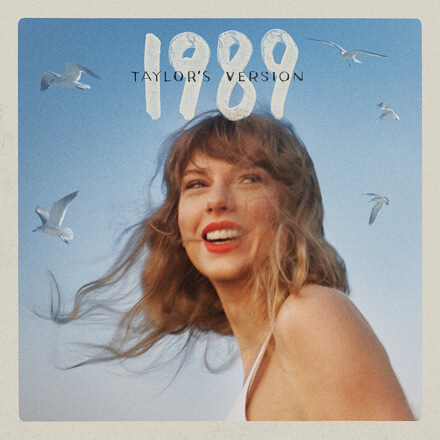
7.4
1989 (Taylor’s Version)
Taylor Swift
In what has to be one of the busiest schedules known to man, pop superstar Taylor Swift took a break during legs of her blockbuster Eras Tour to produce its movie, go on a whirlwind romance with Kansas City Chiefs player Travis Kelce, and release the updated version of the best pop album in her discography: 1989.
Her international dominance in 2014 when she dropped the first iteration is parallel only by her ubiquity now — starting with Midnights, who fully invaded the top ten of Billboard’s Hot 100 singles list — she’s been on such high media alert that the Empire State Building lit up in honor of her eating a chicken tender with ketchup and “seemingly ranch.” Now with another version of one of her most popular albums available for fans to pore over, the results seem to be the same. 1989 (Taylor’s Version) is slated to sell over 1.5 million US copies in its first week, surpassing the original, but the question is still out on whether it brings anything new to the table, or falters in the same way that Speak Now (TV) earlier this year did.
1989 is one of the sharpest albums of all time (it must be a top three ‘Pop Bible’, alongside Carly Rae Jepsen’s EMOTION and Robyn’s Body Talk), so it’s no surprise that fans were guarded with any revamps that might come along to replace the original. 1989 has over 1800 plays on my phone and serious nostalgia that comes from listening to it in the first winter of high school, so it was a near-impossible task to live up to what I’d been hearing on repeat all these years. And the short answer is that it doesn’t.
Rebuilding these songs from the ground up is a tricky project, and while some songs are preserved well, others are immediately clunkers. “Style (Taylor’s Version)” is dead on arrival, its magical bassline being replaced by one with little personality — and again, these might be good in a few years from now, but it’s hard to simply get rid of the rose-colored glasses we put on when viewing one of best Swift’s all-time pop songs. But look no further from the switch to the electrifying lightning clap that kicks off the chorus being replaced by a pathetic hand-clap: the energy just evaporates. The same goes for personal favorite “I Wish You Would (TV)”, whose intensity and crackling instrumentals drops off in the flattened new version.
The errors continue. The jarring bassline in “All You Had To Do Was Stay (Taylor’s Version)” dates it severely, it’s even harder to pretend the original “Shake It Off” is a good song with its revamp, horns depressed and seriously corny. “How You Get The Girl” has some effects that would rather be loud than good, and on the vault tracks, “Suburban Legends” is an awkwardly-paced narrative that ends up at a 1950s gymnasium, for some reason, and “Say Don’t Go” is one of her most blandly-written songs yet, the idiosyncrasies of her writing completely wiped. (However, the line “I’m yours, but you’re not mine” deserves some applause.)
But the highlights. Nearly every slower song on 1989 benefits from some changes on the revamp — “This Love (TV)”, “Wildest Dreams (TV)”, “Clean (TV)” and “You Are In Love (TV)” are all given time to breathe with mature production. “Clean (TV)”, particularly, lends itself to great songwriting and fantastic atmospheric details. But intense cuts like “Out Of the Woods (TV)” are heightened from an even greater infusion of Jack Antonoff’s production: everything seems louder, bolder, sharper, which is exactly what the song was so good at doing in the first place. “I Know Places (Taylor’s Version)” is ever more sparkling and cinematic, along with “Wildest Dreams (TV)”, which seems to get better with time and age. ‘Improvement’ is a strong word, but there’s something in these select songs that make them interesting enough to return back to, whereas other songs might remain in the dark after your initial 1989 (TV) play-through.
And now onto the vault tracks. The aforementioned “Say Don’t Go (TV)” and “Suburban Legends (TV)” weren’t too biting, but the rest are solid. Many have complained “SLUT! (TV)” wasn’t an angry, Olivia Rodrigo-type rock jam that the title assumes, but the songs on Swift’s future rock album (we’re manifesting here) ought to stay together. The writing perspective on the actual song is interesting — surrendering to the narratives, she and a lover might as well play for the cameras if they’re to label her anyway. “If I’m gonna be drunk, I might as well be drunk in love,” she sings. (The best part of the song is her insistence that this has been tucked in a vault somewhere for 9 years, when the songwriting style isn’t anywhere near what she put out in years prior. Rather, this is probably something she drew up for Midnights and couldn’t fit there.)
“Now That We Don’t Talk (TV)” is a pure Jack Antonoff cut, including propulsive synths and a catchy, fun premise. It also features something that she used on Midnights, but couldn’t quite get to work: humor! The song is funny, a winking nod at calling your mom for advice and repetition of a blunt circumstance. The outro even features a silver lining at the relationship dissipating: “I don’t have to pretend I like acid rock / Or that I’d like to be on a mega yacht / With important men who think important thoughts.” “Is It Over? (TV)” has what was desperately missing in “Say Don’t Go (TV)”: signature Swiftian writing and a clear-eyed narrative. A breakup anthem that reflects on how far a relationship went, it features one of her most shocking confessions so far: “Oh Lord, I think about jumping / Off of very tall somethings / Just to see you come running.” It fits into the landscape of 1989 and is a perfect ending to the era.
Like with all of Taylor’s Versions, what you take and leave is up to you. Some are making their own playlists, swapping out songs from the original with ones they like better on the new version — some Swifties say this is traitorous, and you must adhere religiously to the re-recordings, lest you put more money into an evil man’s pocket. It doesn’t really matter in the end — it’s clear these new versions are more for Taylor to own her own work than chart success or domination: those will come no matter what she does. So while 1989 (Taylor’s Version) is a nice revisit of some songs, it’ll be impossible to abandon the career-defining perfection that made up the nostalgia-ridden 2014 original.
Latest Reviews
Tracks
Related Albums
Related News
Advertisement
Looking for something new to listen to?
Sign up to our all-new newsletter for top-notch reviews, news, videos and playlists.
